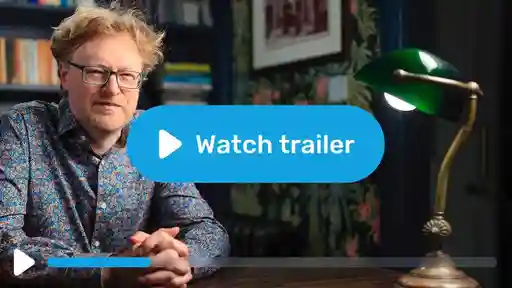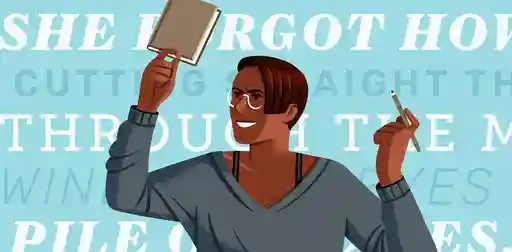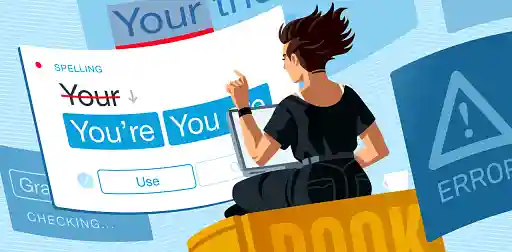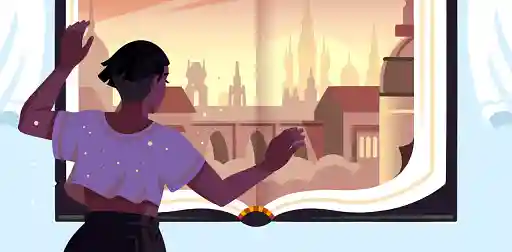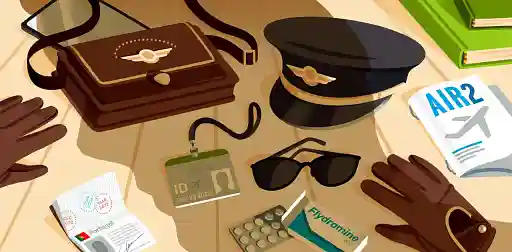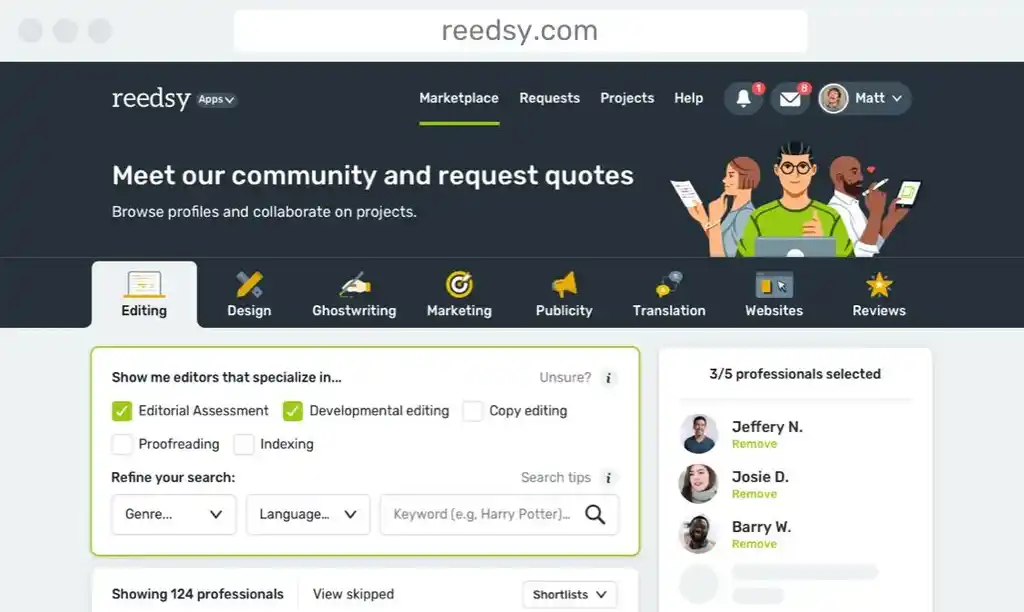Last updated on Oct 14, 2025
Live: How to Structure Your Novel Before You Write It
Loretta Bushell
Loretta is a writer at Reedsy who covers all things craft and publishing. A German-to-English translator, she specializes in content about literary translation and making a living as a freelancer.
View profile →Below is the transcript from our live webinar on How to Structure a Novel Before You Write It, held on October 23rd 2019 with New York Times bestselling author Caroline Leavitt.
This transcript has been edited for length and clarity.
Hi, I’m Caroline Leavitt — author, editor, and book critic.
I used to be one of those people who follows their pen. I’d end up with novels that were 800 pages long and I’d have to spend another year just plowing through and figuring out what the story actually was.
Then, when I was teaching at Stanford, a student of mine said she had taken a course on structure by John Truby and sent me the tapes. I tried some of what he said out on my ninth novel — and lo and behold, that novel was not 800 pages long, but 400. I sold it right away and became a New York Times bestseller. And I thought, “I'm never going to write a novel without structure again.”
Here’s everything I learned and how I start a novel using structure.
Find the story’s core question
The first thing I do is find a question that the novel is going to answer. You don't want to think about your audience at this point. You want to think about what is most meaningful to you personally. What question do you want to know the answer to? That’s the thing that's going to make your work really universal.
For example, I grew up in the only Jewish family in a Christian neighborhood. I wanted to be part of the community, but the more I tried, the more I was pushed aside. As an adult, that's still haunted me. I realized that that was what I wanted to write a book about. So that became my question for Is This Tomorrow: how does somebody become part of a community when the community doesn't want them?
Establish the story premise
You don't have to know your answer at this point — just the question. The next step is to write the premise: a sentence or two stating what the book is about. It tells you the character, their problem, the theme, the story world, and maybe the answer to the question if you know it. For Is This Tomorrow, my premise was:
Ava Lark lives in a 1950s suburb that she's dying to be a part of, but they don't like her because she's divorced and Jewish. But when her son's best friend goes missing, suspicions turn to her. Will they find this boy? Is she to blame? And how will she be a part of the community?
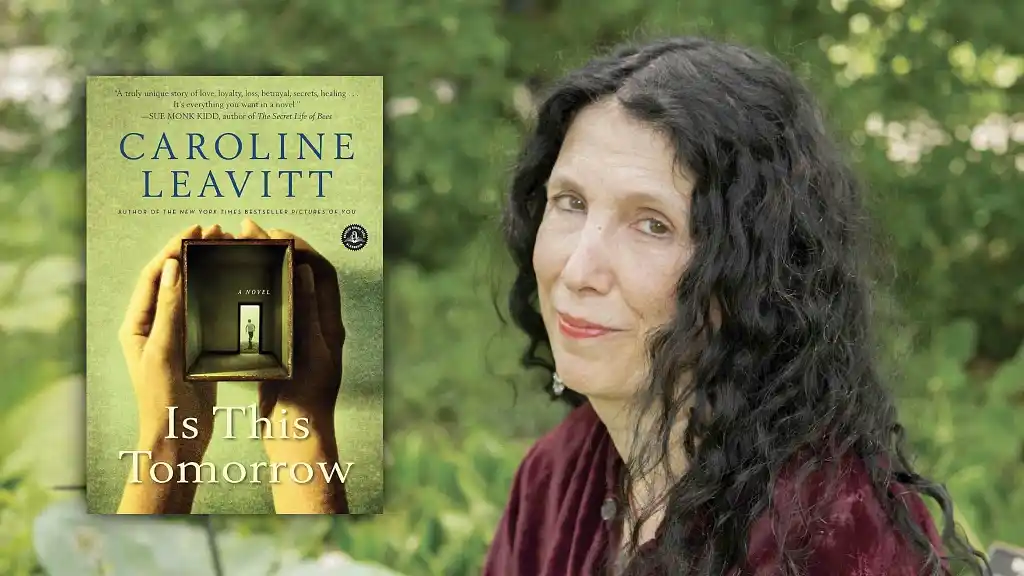
Flesh out your character
Follow the “Wants and Needs Bible”
Next, you need to develop your character. I use something I call the “Wants and Needs Bible” to take my protagonist from the beginning of the story to the end. It’s like the line by The Rolling Stones: “You can't always get what you want, but if you try, sometimes, well, you might find you get what you need.”
Here are the stages I go through, alongside how it works for Nick Carraway in The Great Gatsby:
- The want: Nick is haunted from growing up poor and so he desires money. He wants to be part of Gatsby's high-status society because he believes that will make him happy.
- The misconception: Equating having money to being happy is the misconception that Nick needs to question and dispel.
- Action: The only way to get to the truth is through action. Nick sets out to meet Gatsby, enters his world, and finds a wealthy girlfriend. He gets what he thought he wanted, but he’s still unhappy.
- The “we're all doomed” moment: It seems all is lost when Gatsby is murdered and Nick’s girlfriend turns out to be so superficial that he can't stand being in the same room as her for another second.
- The realization: This is when he realizes that, while this is the life he wanted, it’s not the life he needs. Which leads him to change…
- Starting fresh: Nick walks away from everything to seek something different. This brings his character’s arc to a close.
You can use this process to map out your whole novel. By the end, you have an answer to your core question. Nick's question was, “How can I get money to be happy?” And his answer is, “I can’t. Money doesn’t bring happiness.” We don't know what Nick will do now, but we know he has learned something.
Give them two moral choices
You need to get your characters. One way you can do this is the technique of two moral choices. You put your character through two huge choices, both of which are terrible. This adds tension to your novel, amplifies the question, develops the characters, and furthers the plot.
In William Styron's book Sophie's Choice, Sophie faces two moral choices. The first is when she and her children are standing in line during the Nazi selection. Sophie can either be very quiet and still and hope that nobody sees her and her children, or she can call a Nazi over and tell him she's a Christian and shouldn't be in this selection at all. She makes the choice to call a Nazi over. And as in all good novels, things get worse…
The Nazi looks at her and gives her another choice. Either she gives up one of her children to the gas chamber so that she and the other child can live, or they all die. It's an impossible choice, but she has to make it. She chooses the one where only one child dies 一 and it ruins her for the rest of her life.
Choices like that are really important because they add depth to your character. They also add what I call the “Oh, my God” moment, when people who are reading the book think, “What would I do?” And that hooks them.
Give them a moral blind spot
There's also something you can do with characters called the moral blind spot. This is when the character is doing something wrong and they don't even realize it.
If you start out with a character who’s an alcoholic, you have to ask yourself: “Why is he an alcoholic?” Usually, the deeper reason lies in a traumatic childhood. Suppose when he was a child, he was beaten by his parents, and when he was 16 he got hold of his father's alcohol. He drank and drank and it stopped the pain. He got this misconception that the more he drinks, the more it will fix the pain.
To use the moral blind spot technique, you then have to throw your character in front of situations which prove to him that he's not doing the right thing. Say he’s in a custody battle for his son. He's nervous and he drinks to make him feel better. By the time he arrives, he's so drunk they won't let him even see the kid, let alone have custody. That leads to the “we're all doomed” moment where he realizes he's lost custody of his kid.
That then opens the opportunity for change. The character can realize, “You know what? Maybe I should stop drinking. Maybe I can go to AA. Maybe I can be a whole different kind of character.” And that's a powerful thing.

FREE RESOURCE
Reedsy’s Character Profile Template
A story is only as strong as its characters. Fill this out to develop yours.
Raise the stakes with reveals and reversals
Once you’ve got to know your character, you can move on to plot. Most people who teach about writing novels talk about three acts. When I hear three acts, my head explodes because I don't believe that novels are in three acts. I think a novel has a beginning and it just rises up to the end.
You can do that partly with the wants versus needs above. Another thing you can do is reveals and reversals. Reveals and reversals just basically means that you get new information and reversals of expectations, and things get worse and worse. The stakes rise, so the character has to act more.
Let's say you're supposed to get married, but your partner stands you up at the altar. Well, that's a reveal because it's new information. It's also a reversal because it's reversing your expectations. It ruins everything — but what will be worse than that is if your partner stands you up at the altar and runs off with your mom.
And what would be worse than that? What if your partner leaves you at the altar and runs off with your mom, and then they have a car crash and only your mom survives and you're left to take care of your mom? See how that builds? It makes the stakes higher. It makes things worse and worse.
Make your character learn something
Another thing a lot of story people talk about is: what will the character learn? I agree with that, but with a caveat. It's what will the character learn and what's the cost? There always has to be a cost.
Nick Carraway learns that money and Gatsby's world is not the magic kingdom he always thought it was. And the cost of that is that Nick loses his friend Gatsby. He has to suffer that. But that's what's going to give your novel resonance.
Write and rewrite your synopsis
Once I figure all this out, I write a synopsis. A synopsis is your friend. It’s what's going to get you through your writing.
When I write my synopsis, I go right to the wants and needs list and I start filling it out. I will keep rewriting that synopsis and rewriting that synopsis. My synopses can be 20 pages. I had one that was 40 pages.
The important thing to do as you're writing out this story and the synopsis is to remember that a story has cause and effect. A story is always because this happened, this other terrible thing had to happen. And because this other dramatic thing had to happen, this next thing had to happen.
When I'm done with my synopsis, I'll show it to a bunch of people and have them read it and I make sure that every point is in there. Are there moral choices? Yes. Are there reversals and reveals? Yes. Do I have wants versus needs? Yes. Do I have the answer to the story? Hopefully I do.
With Is This Tomorrow, I actually knew the ending by the time I had finished the synopsis. I figured out that Ava didn't have to belong to that community. She needed to form her own community, which she did by starting to make pies and opening a little shop. Gradually people began to come to her, and that was her ending.
Draft your first chapter
The final step before you really start digging into your novel is the first chapter. I always write my first chapter because everything in the first chapter has the seeds to the end. Your first chapter is the question and your last chapter is the answer to that question.
I make sure that I start not with a long description, not with backstory, not with stuff that's taking too long. I start right in the center of the conflict where we have the character who's troubled and then there's an inciting incident that makes that character have to act.
Writing a novel is truly the most wonderful thing you can do. All this stuff about story structure saved my life. I hope it will save yours.
